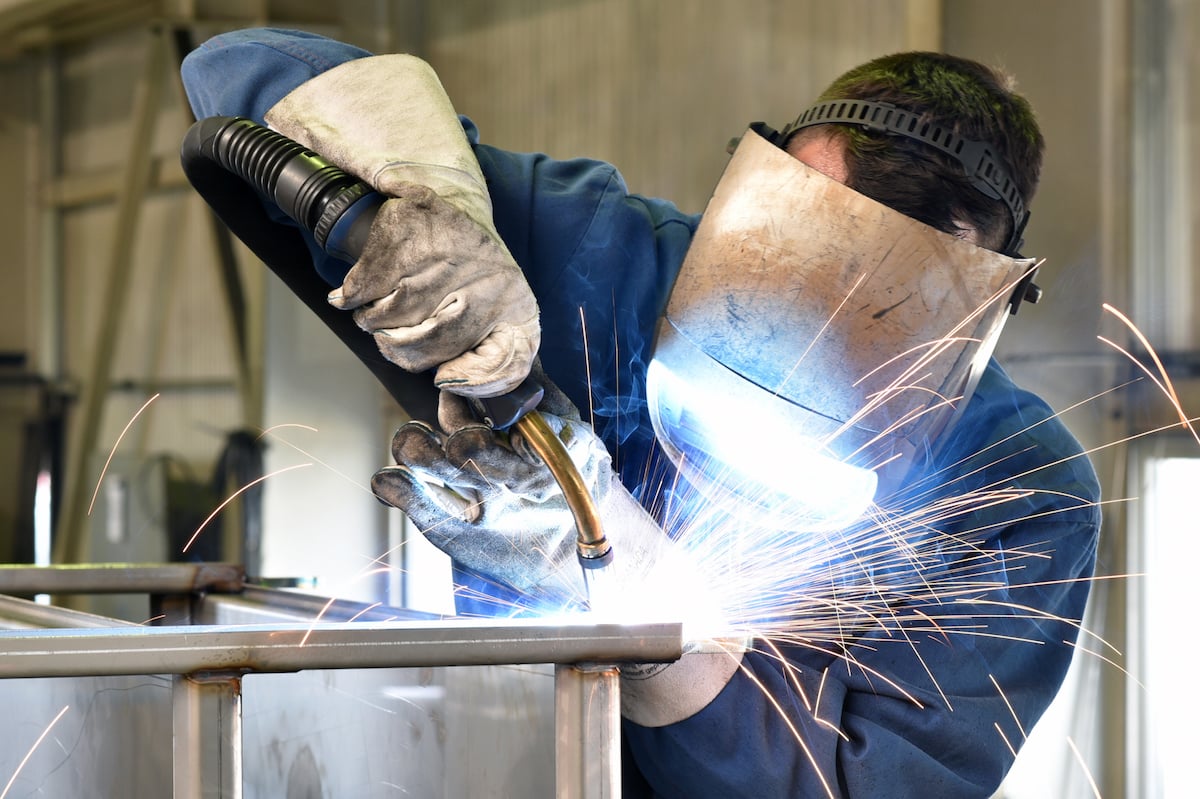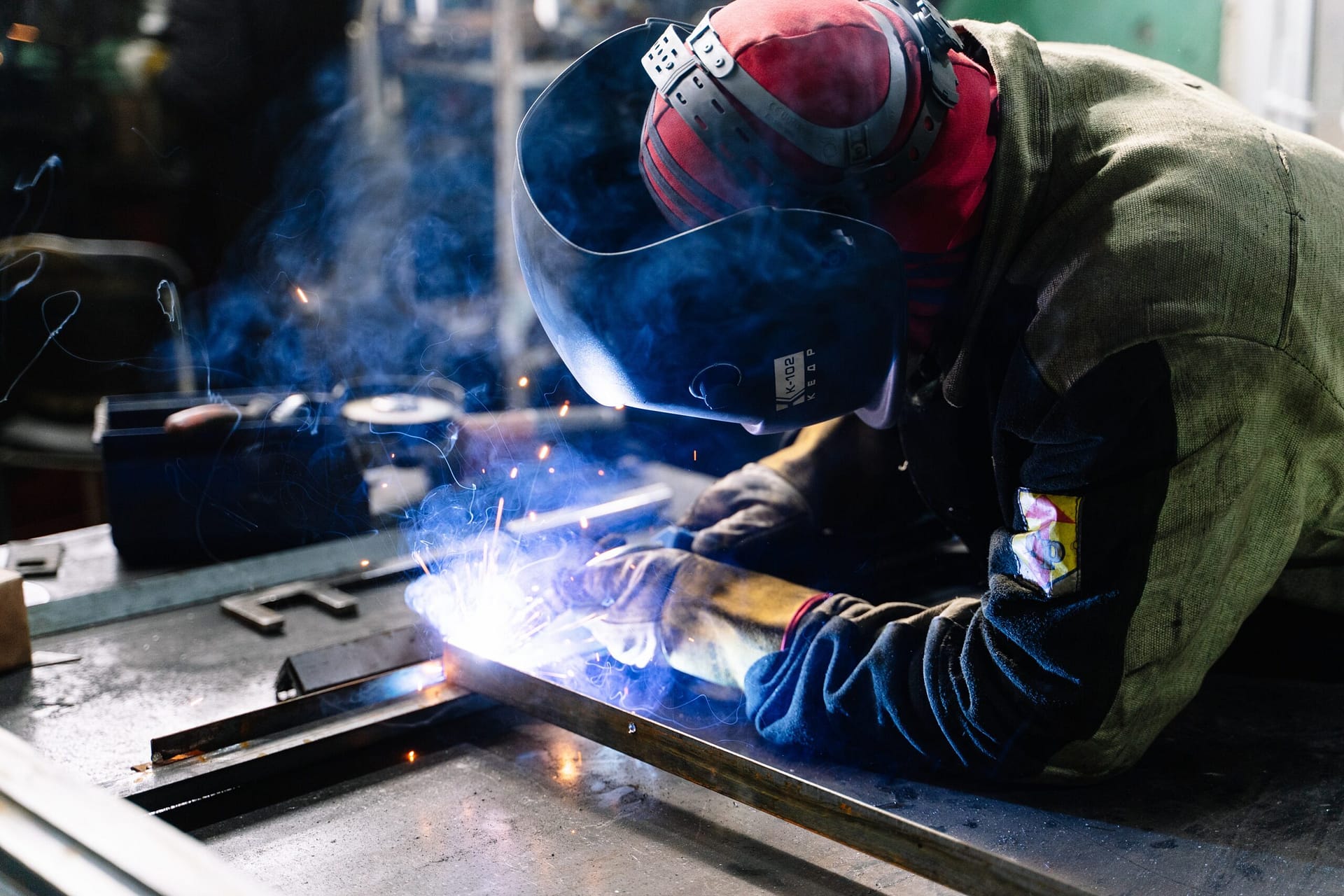Everything about Welding: Secret Insights Into Techniques and Ideal Practices for Success
Welding incorporates a range of methods, each fit for particular materials and applications. Comprehending these methods, such as GMAW, SMAW, and TIG, is vital for achieving excellent results. The best tools and security practices can not be neglected. As preparation and repairing play critical duties in the welding procedure, understanding these aspects can significantly boost the top quality of the end product. What are the crucial factors that ensure an effective weld?
Comprehending Different Welding Methods
Welding methods encompass a range of methods, each suited to details applications and materials. Among one of the most common methods are Gas Metal Arc Welding (GMAW), Secured Metal Arc Welding (SMAW), and Tungsten Inert Gas Welding (TIG) GMAW, likewise called MIG welding, is preferred for its speed and adaptability, making it perfect for thin materials. SMAW, or stick welding, is favored for its simpleness and performance in exterior settings, especially with thicker steels. TIG welding uses accuracy and control, making it appropriate for complex work and non-ferrous metals (Montana Mobile Welding and Repair Fabrication). Each technique has its special advantages and considerations, enabling welders to choose the most effective method based upon the task's demands, material type, and desired end results. Recognizing these methods is essential for effective welding
Necessary Welding Devices and Tools
While different welding methods need particular abilities, the best tools and tools are just as vital for accomplishing quality outcomes. Crucial welding devices includes welding equipments, which differ depending on the technique-- such as MIG, TIG, or stick welding. Safety equipment, including aprons, gloves, and headgears, assurances security and convenience during the process. In enhancement, fixtures and clamps aid protect products in position, making sure precision in welds. Consumables like welding poles, cable, and shielding gas are likewise vital elements that influence the quality of the weld. Moreover, tools such as cutters and grinders assist in surface area prep work and post-weld ending up, contributing to a specialist result. Purchasing premium devices inevitably enhances the effectiveness and efficiency of welding tasks.
Safety Practices in Welding
Appropriate safety and security practices are necessary in the welding sector to protect workers from prospective dangers. Welders have to put on appropriate personal protective devices (PPE), consisting of headgears with proper shading, gloves, and flame-resistant apparel. Adequate air flow is essential to reduce direct exposure to damaging fumes and gases generated during the welding procedure. Additionally, workers ought to be trained in the appropriate handling of welding devices to stop mishaps. Fire precaution, such as maintaining flammable materials away from the welding location and having fire extinguishers readily offered, are essential. Regular inspections of tools and workspaces can assist determine prospective dangers prior to they bring about crashes. By sticking to these security methods, welders can create a much safer working atmosphere and decrease dangers linked with their trade.
Readying Products for Welding
Preparing products for welding is an essential step that significantly affects the high quality and integrity of the final product (Belgrade Welding). Appropriate prep work entails cleaning up the surfaces to get rid of pollutants such as dust, corrosion, and oil, which can jeopardize the weld. Strategies such as grinding, fining sand, or utilizing solvents are typically utilized to attain a clean surface area. Furthermore, guaranteeing that the products fit with each other well is crucial; voids can bring about weak welds. It's likewise essential to take right into account the positioning and positioning of the parts, as this will certainly influence the simplicity of welding and the last end result. Lastly, picking the appropriate filler product and making certain compatibility with the base metals is essential for achieving solid, sturdy welds
Tips for Achieving High-Quality Welds
Attaining high-grade welds calls for focus to detail and adherence to ideal techniques throughout the welding procedure. Proper joint prep work is essential, ensuring surface areas are free and clean from pollutants. Choosing the suitable filler product and welding method based upon the base steels is critical for excellent bonding. Preserving consistent traveling rate and angle while welding can advertise and stop issues uniformity. Additionally, regulating heat input is important; too much warmth can bring about bending and weakened joints. If essential, frequently inspecting the welds during the process permits for immediate changes. Using ideal post-weld therapies, such as cleansing and stress and anxiety alleviation, can enhance the longevity and honesty of the weld, eventually ensuring a successful result.
Repairing Typical Welding Issues
Welding commonly presents obstacles that can influence the quality and integrity of the end product. Usual issues such as porosity, inconsistent weld grains, and overheating can occur, each needing specific troubleshooting methods. Comprehending these troubles is necessary for check here welders to boost their abilities and accomplish ideal results.
Porosity Problems Discussed
Porosity can commonly be forgotten, it continues to be a crucial issue in welding that can jeopardize the integrity of a completed product. Porosity refers to the existence of tiny gas pockets within the weld bead, which can compromise the joint and lead to premature failure. This trouble generally occurs from pollutants, moisture, or inappropriate securing gas insurance coverage during the welding procedure. To alleviate porosity, welders should verify that the base products are completely dry and clean, make use of appropriate shielding gases, and keep consistent welding parameters. Consistently checking the equipment and atmosphere can also aid recognize prospective issues prior to they show up in the weld. Resolving porosity effectively is important for attaining strong, resilient welds that satisfy quality criteria.

Irregular Weld Beans
Irregular weld beads can significantly impact the high quality and toughness of a finished item. Numerous aspects add to this problem, consisting of improper traveling rate, incorrect amperage setups, and irregular electrode angles. When the welder relocates also swiftly, a grain may show up narrow and lack penetration, while moving too gradually can create extreme build-up. Additionally, utilizing the incorrect amperage can lead to either damaging or extreme spatter, both of which compromise weld honesty. The welder's strategy, such as inconsistent torch motion, can additionally cause unequal bead look. To mitigate these problems, welders need to concentrate on preserving steady, regulated movements and guaranteeing appropriate equipment setups to attain harmony in their welds. Consistency is crucial to accomplishing trustworthy and solid welds.
Overheating and Warping Issues
Excessive heat during the welding process can lead to significant overheating and buckling concerns, affecting the structural integrity of the work surface. These issues often show up as distortion, which can compromise alignment and fit-up, making more assembly testing. Elements adding to overheating consist of the option of welding specifications, such as voltage and travel rate, in addition to the type of product being bonded. To alleviate these issues, welders ought to preserve constant travel speed and proper warmth input while checking the work surface temperature level. In addition, preheating or post-weld heat treatment can help minimize stress and anxieties triggered by fast cooling - Montana Mobile Welding and Repair. Normal examination and adherence to ideal practices are vital in avoiding getting too hot and ensuring the longevity and reliability of bonded frameworks
Regularly Asked Concerns
What Are the Occupation Opportunities in the Welding Sector?
The welding sector supplies diverse profession possibilities, consisting of settings as welders, teachers, examiners, and engineers. Experts can operate in production, construction, aerospace, and automobile industries, gaining from strong need and competitive wages in various functions.
Exactly How Can I Enhance My Welding Speed Without Giving Up Quality?
To improve welding rate without compromising high quality, one should practice effective methods, keep devices, optimize settings, and enhance hand-eye control. Normal training and looking for responses can additionally greatly contribute to achieving quicker, premium welds.
What Qualifications Are Offered for Welders?
Countless accreditations exist for welders, consisting of those from the American Welding Culture (AWS), the National Facility for Building Education And Learning and Research Study (NCCER), and numerous industry-specific organizations. These qualifications enhance employability and show skill proficiency.
How Does Welding Influence the Qualities of Metals?
Welding affects the residential or commercial properties of steels by changing their microstructure, which can bring about adjustments in stamina, firmness, and ductility. Warm input and cooling prices during the process substantially influence these material features.
Can I Weld Dissimilar Metals Together?
